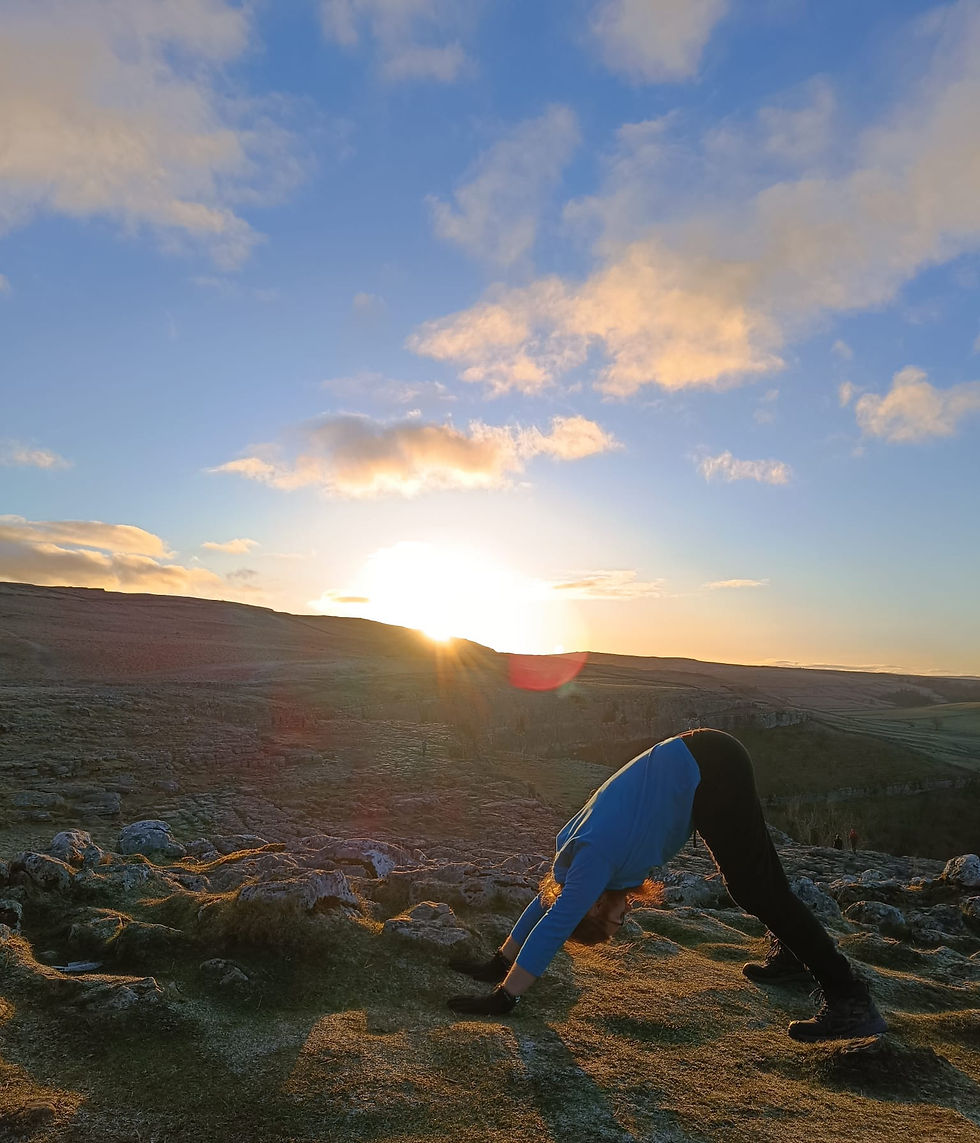🐶 How to Do Downward Dog (Adho Mukha Svanasana)
- Santosha Yoga

- Aug 5
- 2 min read

✅ Step-by-Step Instructions:
Start in table top
Place your hands directly under your shoulders and your knees under your hips.
Spread your fingers wide and press firmly into the mat.
Tuck your toes under
Prepare to lift your knees off the ground.
Lift your hips up and back
On an exhale, straighten your legs (or keep a slight bend if your hamstrings are tight).
Push your hips toward the ceiling to form an inverted "V" shape.
Align your body
Arms should be shoulder-width apart, and feet should be hip-width apart.
Heels may or may not touch the ground — that’s okay!
Keep your head between your arms, ears aligned with your upper arms.
Engage your muscles
Press your chest gently toward your thighs.
Engage your core and thighs.
Relax your neck and breathe deeply.

🧘♀️ Tips for Better Alignment:
Bend your knees slightly if your hamstrings feel tight, this helps lengthen your spine.
Don’t worry about touching the floor with your heels, that comes with practice.
Keep shoulders away from ears, avoid shrugging.
Gaze softly at your feet or between your knees, avoid straining your neck.

Downward Facing Dog (Adho Mukha Svanasana) offers a wide range of physical, mental, and energetic benefits. Here’s a breakdown of its most impactful benefits:
🧘♂️ Top Benefits of Downward Dog
💪 1. Strengthens the Entire Body
Arms and shoulders hold up much of your body weight.
Core muscles engage to stabilize your spine.
Legs and feet build strength as they support and stretch simultaneously.
🧘 2. Deep Full-Body Stretch
Stretches the hamstrings, calves, arches, and Achilles tendons.
Opens the shoulders and chest.
Lengthens the spine and improves back flexibility.
🩸 3. Boosts Circulation
Inverted position (hips above heart) encourages blood flow to the brain, face, and upper body.
Can help improve lymphatic flow and reduce fatigue.
🧠 4. Calms the Nervous System
Activates the parasympathetic nervous system ("rest and digest" mode).
Can help reduce stress, anxiety, and mental fog.
Often used as a resting pose in Vinyasa flow.
🦵 5. Improves Posture and Alignment
Encourages a neutral spine and engages postural muscles.
Helps counteract the effects of sitting or slouching.
🧍 6. Enhances Flexibility
Especially in the backs of the legs (hamstrings, calves) and shoulders.
Regular practice increases mobility over time.
😌 7. Builds Body Awareness
Helps you develop awareness of alignment, breath, and balance.
Encourages mindful movement in yoga practice.
✅ It's a Foundation for Many Yoga Flows
Downward Dog is often a transition pose in yoga classes (like in Sun Salutations), so mastering it helps you move more fluidly through sequences.



Comments